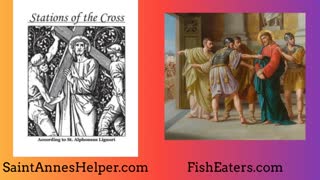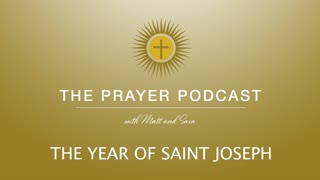Saint Joseph’s Feast Day March 19 - Traditional Catholic Italian Customs Altar, St Joseph Table
Feast of St. Joseph (visit https://www.fisheaters.com/customslent5.html to learn more)
The Church traditionally dedicates the month of March to the special honoring of St. Joseph, whose feast day is celebrated March 19th. "He was chosen by the eternal Father as the trustworthy guardian and protector of his greatest treasures, namely, his divine Son and Mary, Joseph’s wife," says St. Bernardine of Siena. Due to St. Joseph's leadership of the Holy Family, he has been declared the protector and patron of the universal Catholic Church.
Seven days before the Feast of the Annunciation, on March 25, which celebrates Gabriel's visit to Mary announcing that she is to give birth to the Messiah, we meet St. Joseph, her spouse.
St. Joseph was born in Bethlehem and worked as a carpenter, an occupation he later passed on to his Son.
We know Joseph was a man of faith, obedient to whatever God asked of him without knowing the outcome. When the angel came to Joseph in a dream and told him the truth about the child Mary was carrying, Joseph immediately and without question or concern for gossip, took Mary as his wife. When the angel came again to tell him that his family was in danger, he immediately left everything he owned, all his family and friends, and fled to a strange country with his young wife and the baby. He waited in Egypt without question until the angel told him it was safe to go back.
Customs of the Day:
St. Joseph's Day is a big Feast for Italians because in the Middle Ages, God, through St. Joseph's intercessions, saved the Sicilians from a very serious drought. So in his honor, the custom is for all to wear red, in the same way that green is worn on St. Patrick's Day.
On this feast day, after Mass (at least in parishes with large Italian populations), a big altar called the "St. Joseph's Table" is laid out with food contributed by everyone. Different Italian regions may celebrate this day differently, but all involve special meatless foods.
The table -- which is always blessed by a priest -- will usually be in three tiers, symbolizing the Most Holy Trinity. The top tier will hold a statue of St. Joseph surrounded by flowers and greenery. The other tiers might hold, in addition to the food: flowers (especially lilies); candles; figurines and symbolic breads and pastries shaped like a monstrance, chalices, fishes, doves, baskets, St. Joseph's staff, lilies, the Sacred and Immaculate Hearts, carpentry tools, etc.; 12 fishes symbolizing the 12 Apostles; wine symbolizing the miracle at Cana; pineapple symbolizing hospitality; lemons for "luck"; bread and wine (symbolizing the Last Supper); and pictures of the dead. There will also be a basket in which the faithful place prayer petitions.
The day ends with each participant taking home a bag that might be filled with bread, fruit, pastries, cookies, a medal of St. Joseph, a Holy Card and/or a blessed fava bean. Keep your "lucky bean," and let it remind you to pray to St. Joseph.
Visit https://www.fisheaters.com/customslent5.html to learn more about this day and find some traditional recipes to cook up for this celebration.
A child’s prayer to St. Joseph/
St. Joseph,
watch over me
and care for me
just as you cared for
the child Jesus;
and by your help,
may I come to know
your Son,
and so grow
in strength
and wisdom
and the favor of God.
Amen.
Thanks for watching and Deo Gratias! Visit us online at www.TradKidsTV.com
-
 3:08
3:08
Traditional Catholic Faith for Kids
3 years ago $0.02 earnedAll about the Stations of the Cross for Kids - Learn more about this Catholic Lenten tradition
5574 -
 6:00
6:00
WMAR
3 years agoSt. Joseph School Cockeysville - Catholic Schools Week 2021
24 -
 2:54
2:54
The Nomad Explorer
3 years agoSaint Joseph Sound Large Stingray
57 -
 38:52
38:52
see Life! see Faith! See Jesus! cLIfe!
3 years ago"Round Table 2" March 18, 2014
177 -
 16:44
16:44
The Prayer Podcast
3 years ago $0.03 earnedThe Year of Saint Joseph - The Prayer Podcast
139 -
 1:00
1:00
BuzzvideosNO
3 years agoSaint Joseph fyr i USA er helt gjenfrosset
15 -
 1:00
1:00
BuzzvideosDK
3 years agoSaint Joseph Lighthouse i USA er fuldstændig frosset til
6 -
 1:00
1:00
Buzzvideos - PT
3 years agoO Farol Saint Joseph nos estados unidos está congelado
23 -
 1:00
1:00
BuzzvideosIT
3 years agoMichigan: faro di Saint Joseph diventa pezzo di ghiaccio
2 -
 1:00
1:00
Buzzvideos - EN
3 years agoSaint Joseph Lighthouse in the US is completely frozen
2